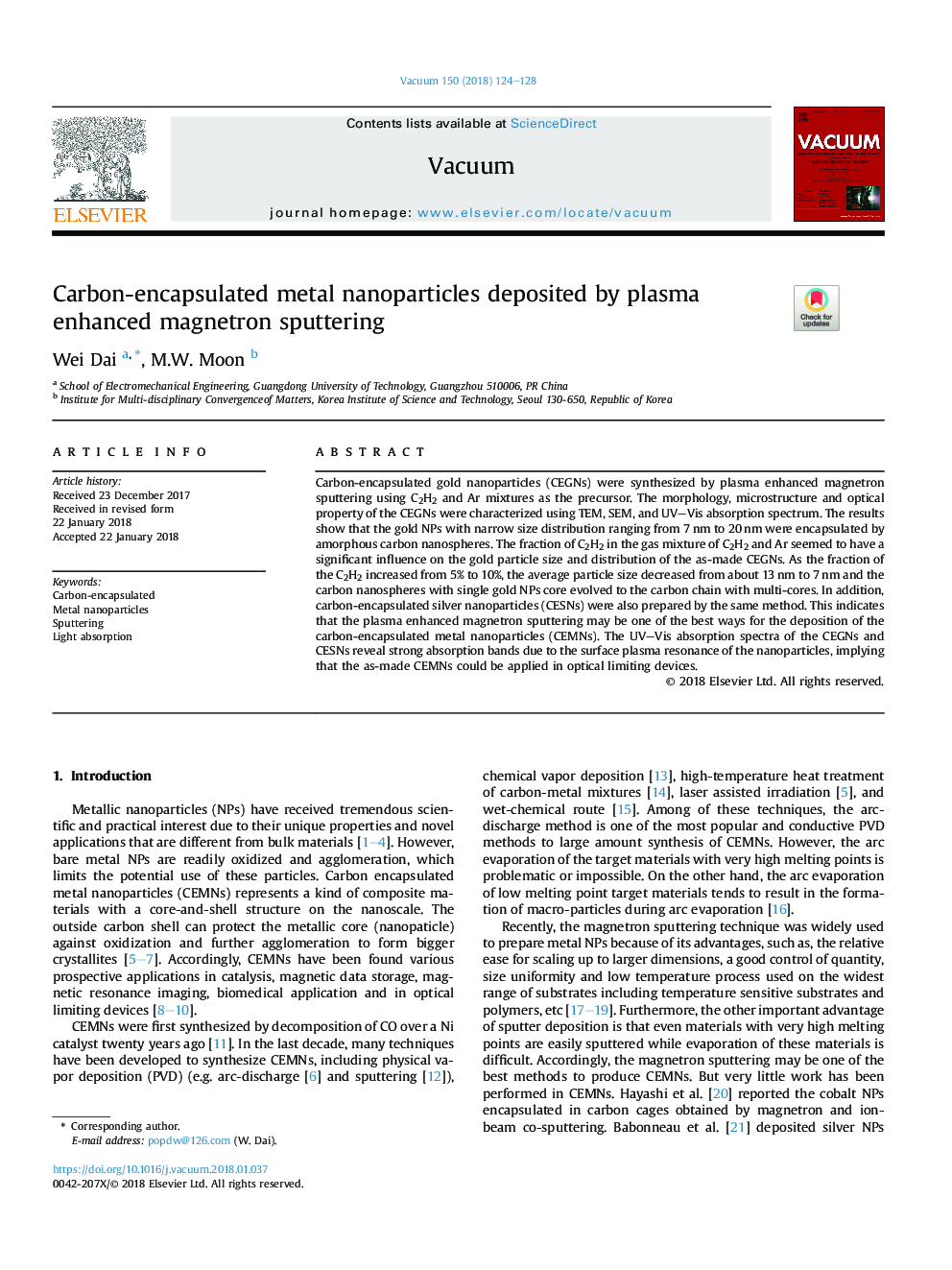| Article ID | Journal | Published Year | Pages | File Type |
|---|---|---|---|---|
| 8044521 | Vacuum | 2018 | 5 Pages |
Abstract
Carbon-encapsulated gold nanoparticles (CEGNs) were synthesized by plasma enhanced magnetron sputtering using C2H2 and Ar mixtures as the precursor. The morphology, microstructure and optical property of the CEGNs were characterized using TEM, SEM, and UV-Vis absorption spectrum. The results show that the gold NPs with narrow size distribution ranging from 7â¯nm to 20â¯nm were encapsulated by amorphous carbon nanospheres. The fraction of C2H2 in the gas mixture of C2H2 and Ar seemed to have a significant influence on the gold particle size and distribution of the as-made CEGNs. As the fraction of the C2H2 increased from 5% to 10%, the average particle size decreased from about 13â¯nm to 7â¯nm and the carbon nanospheres with single gold NPs core evolved to the carbon chain with multi-cores. In addition, carbon-encapsulated silver nanoparticles (CESNs) were also prepared by the same method. This indicates that the plasma enhanced magnetron sputtering may be one of the best ways for the deposition of the carbon-encapsulated metal nanoparticles (CEMNs). The UV-Vis absorption spectra of the CEGNs and CESNs reveal strong absorption bands due to the surface plasma resonance of the nanoparticles, implying that the as-made CEMNs could be applied in optical limiting devices.
Related Topics
Physical Sciences and Engineering
Materials Science
Surfaces, Coatings and Films
Authors
Wei Dai, M.W. Moon,
